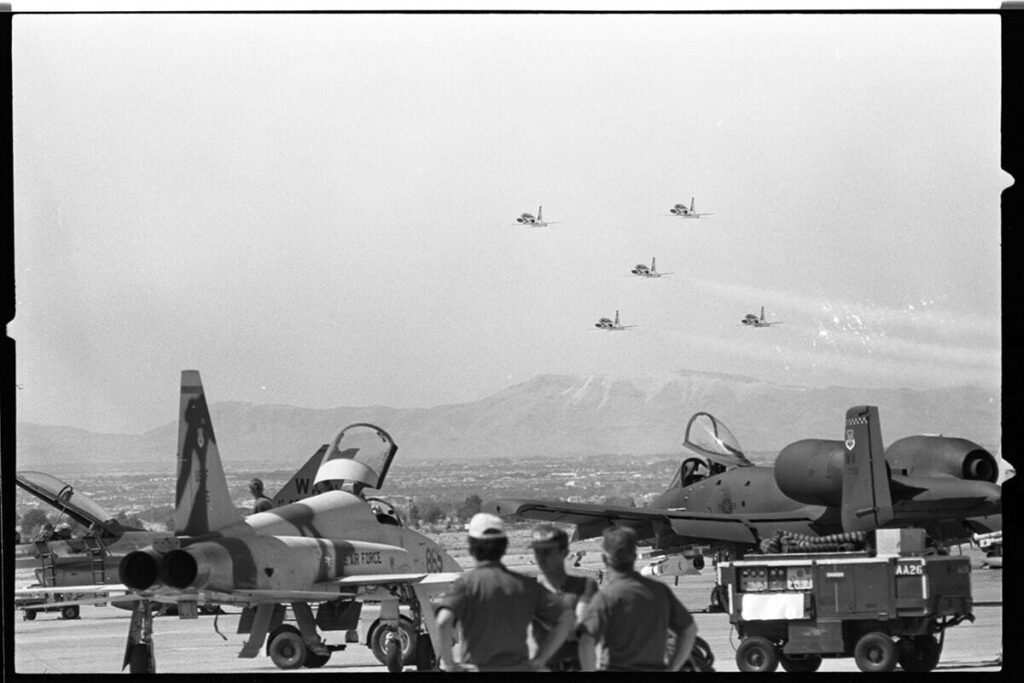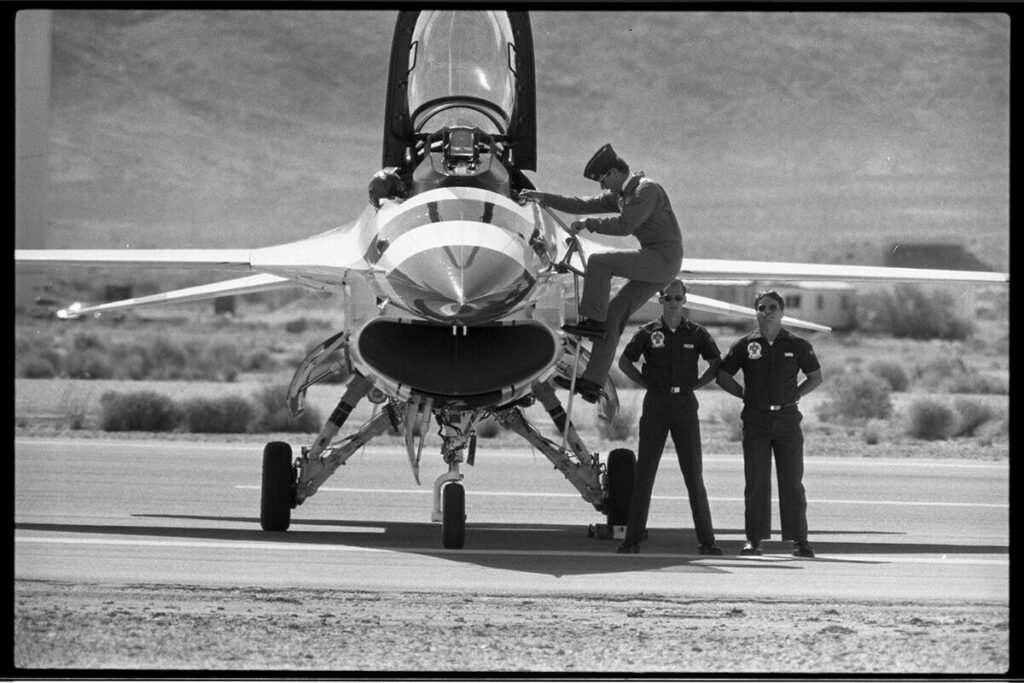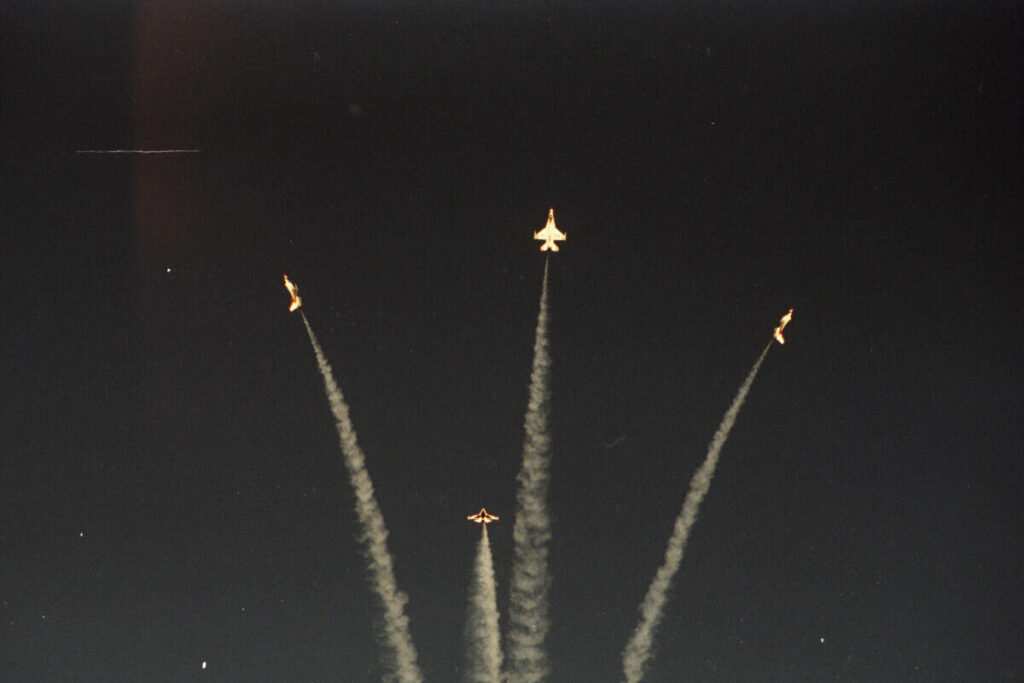Since the Thunderbirds were first formed in 1953, the air demonstration team has gone on to perform worldwide for billions of viewers.
The team, made up of eight pilots (six for demonstration) was originally formed to support Air Force recruitment programs and build American’s confidence in the Air Force.

The team moved to Nellis Air Force Base in 1956 from Luke Air Force Base. In 1983, the Thunderbirds began using their iconic F-16A. The Thunderbirds fly F-16Cs today after switching in 1992.
Other aircrafts previously flown by the squadron include the F-84G Thunderjet, the F-84 Thunderstreak and the world’s first supersonic fighter, the F-100 Super Sabre, to name a few.

The Thunderbirds’ schedule consists of about 75 shows a year, and the squadron has performed over 4,000 shows in its 69-year history. Over 300 million people have attended shows internationally.
About 3.5 billion people watched the Thunderbirds perform at the 1996 Centennial Olympics opening ceremonies in Atlanta, according to the U.S. Air Force website.

Twenty-one pilots have been killed in the squadron’s history, but only three crashes have occurred during shows. In 1982, four planes crashed nose first at the Indian Springs Air Force Auxiliary Field in an accident known as the Diamond Crash. The pilots were training for an air show when the planes failed to turn up from a loop soon enough to avoid impact. All four pilots involved in the training died.
The aircrafts fly as close as 18 inches from each other during some of their most complicated maneuvers, and can fly at speeds over 1,000 mph, according to the U.S. Air Force.
___
© 2022 Las Vegas Review-Journal
Distributed by Tribune Content Agency, LLC.



